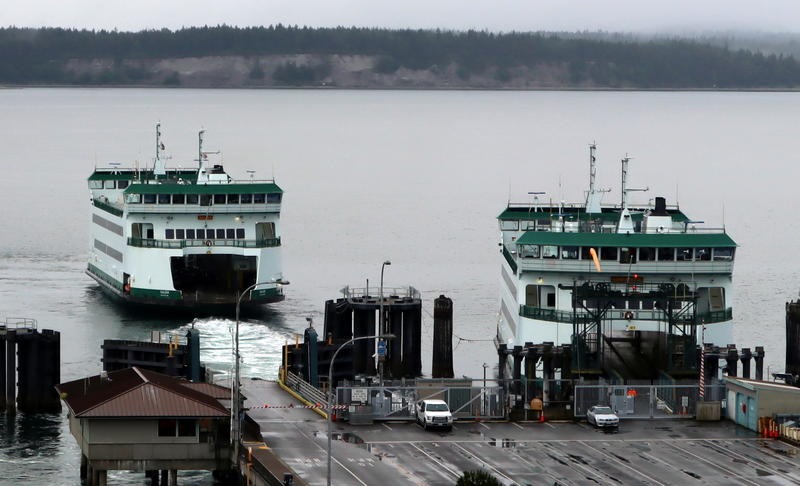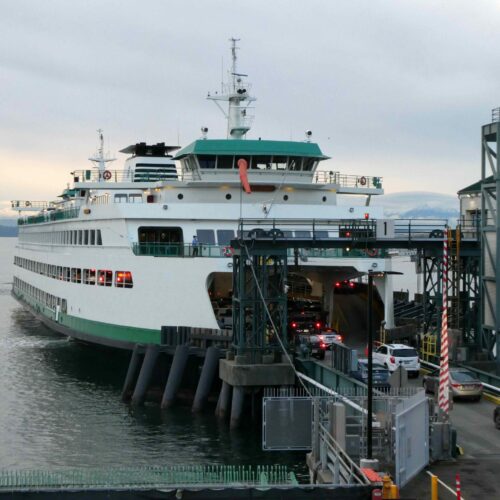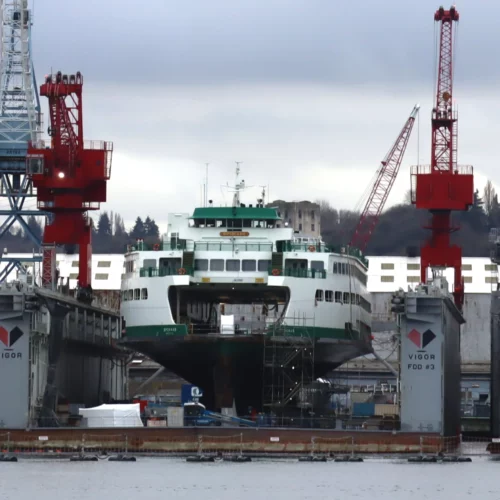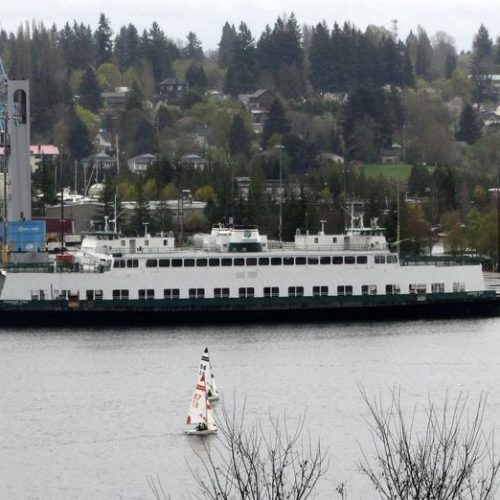
Washington State Ferries To Stay On Reduced Schedule As Summer Begins
READ ON
Summer officially begins on Saturday, but it still feels like winter if you study the sailing schedule of Washington State Ferries. With ridership depressed by the ongoing pandemic, the nation’s biggest ferry system is sticking to a reduced schedule through what would normally be its busiest season.
Washington State Ferries said it is keeping options open to restore service if justified by demand. But that will require crews to be available too, and for the funding to pencil out. Service reductions are spread across the system’s ten routes.
During the past three summers, advance reservations for the Coupeville-Port Townsend ferry crossing sold out pretty much every weekend all through the summer. Tom Thiersch of Port Townsend guessed this year will be different.
“Because of the COVID-19 pandemic, all of the popular events that bring visitors to Port Townsend over the summer have been canceled,” said Thiersch, who serves as chair of the Port Townsend Ferry Advisory Committee. “No jazz or blues festival. No film festival. No wooden boat festival, and so forth.”
The route serving Thiersch’s hometown across the top of Puget Sound currently operates with just one ferry instead of two, making 44 percent fewer daily crossings than last summer. He predicted the limited service could work out OK as long as people who need to make essential trips are able to get reservations.
“I expect that ferry traffic will stay at fairly low levels compared to our usual summer season,” Thiersch said.
The stakes may be the highest in Washington’s San Juan Islands, which in the absence of any bridges to the mainland, are dependent on the state ferries. Last summer, five vessels were assigned to the islands. This year, WSF is using just three boats on the weekends and four on weekdays, several of which are smaller sized. There is no dedicated inter-island boat on weekends this year.
“We will not have the normal amount of ferry capacity that we’re used to in the summertime to bring people to the islands,” said San Juan County Council Chair Rick Hughes in an interview. “It’s a very scary proposition.”
Hughes said a portion of the local population actually welcomes some relief from the hordes of visitors who typically descend on the archipelago between May and September. But he added that tourism is a big part of the economy, so another segment of the community is counting on adequate ferry service.
Hughes said he had started to hear about commercial deliveries not being able to get their desired reservations to make an efficient roundtrip. Ferry users raised their concerns with a ferry system manager during a county-led discussion last week.
Hughes said county officials are sympathetic to the challenges facing the state ferry system during the pandemic and he complimented the leadership for trying the best they can.
“Generally, our ridership numbers have been hovering around 50-60 percent below this same time last year,” wrote Amy Scarton, head of Washington State Ferries, in the agency’s most recent weekly newsletter.
A ferry system spokesman said in a follow up interview that WSF is starting to see demand come back, but nothing yet to justify restorations of service.
“It’s something we’re keeping a close eye on,” said spokesman Ian Sterling on Tuesday. “We can kind of modularly plug things back in.”
On its website, the ferry system reminds people looking at any route that the governor’s stay-at-home order is still in effect.
“Customers are advised to limit travel on ferries to essential purposes only, and to observe physical distancing by remaining in their vehicles whenever possible,” reads one of the first bulletins on a list of travel alerts.
Earlier this month, the ferry system laid out four pillars that have to align before it can restore service to pre-pandemic levels.
- Ridership – Demand has to return for additional runs to be considered.
- Crew availability – Around 150 crewmembers are currently unavailable to sail because they are older or in another high-risk category for COVID-19.
- Vessel availability – There is a lack of boats available for service due to the maintenance shutdown earlier this year, combined with a continued reduction of U.S. Coast Guard inspection capacity.
- Funding –With the loss of ridership, Washington State Ferries experienced a corresponding drop in fare revenue. Current and projected future revenue losses are running into the tens of millions of dollars, which impacts the ability to restore service going forward.
Another notable element in the reduced WSF schedule is the indefinite hiatus of the Anacortes-Sidney, B.C. run. The international service has not operated this year at all because the U.S. and Canadian governments jointly closed the northern border in March to tourist and recreational crossings. The national governments have repeatedly extended these border crossing restrictions because of the ongoing coronavirus pandemic, most recently to July 21.
Related Stories:

Washington ferry service to be restored to pre-pandemic levels by summer, governor says
The diesel-powered state ferry Tacoma, shown here in Seattle, will not be pulled from service anytime soon for conversion to hybrid-electric propulsion by order of Gov. Bob Ferguson. (Credit: Tom

‘Build in Washington’ rule may be cast overboard to obtain new ferries affordably and quickly
Every new car ferry added to the Washington State Ferries fleet over the past fifty years was built at a Puget Sound shipyard. Now, state lawmakers are considering a break from past policy in order to obtain new vessels faster and cheaper for the troubled state ferry system.

Want A Really Big Houseboat? Former Washington State Ferry May Head To Auction (Again)
A former state ferry now moored on the Olympia waterfront may be headed for auction for the third time in about three years, this time to remedy months of unpaid port bills. The venerable car ferry Evergreen State was declared “abandoned” by the Port of Olympia on Friday, to the dismay of its owner.















